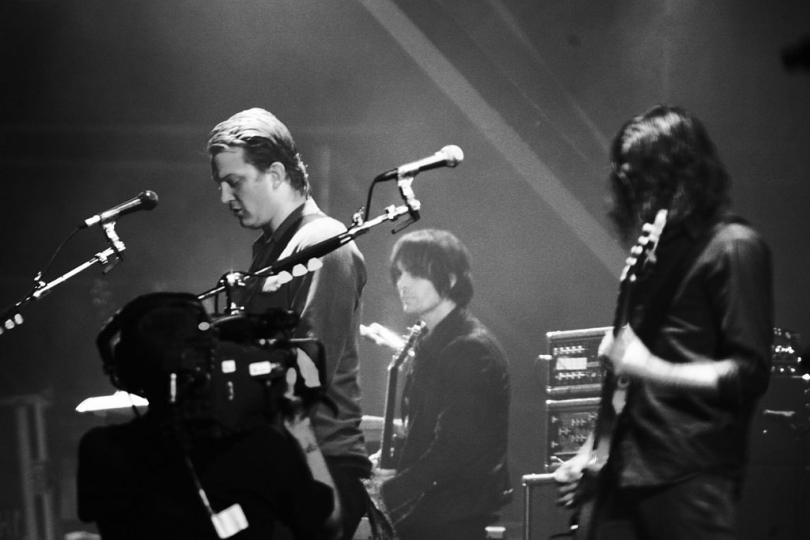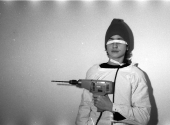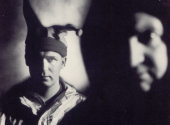
Milestones in Music History #9: QOTSA and Desert Rock
Noise Music; Barret; Suicide; Velvet Underground; Desert Rock; the history of music is a perilous and yet appeasing path to walk. It has been, since the very beginning of times, this powerful gift, and music is possibly the most evolving and sophisticated form of art, which affected culture, lifestyle, society, and history itself. The purpose of the Insounder series “Milestones in Music History” is to delight you with some of the pivotal moments in music, some acts, facts, and records that delineated and shaped music for years to come (actually as far as this series could go on). I have selected a few, based on my personal path through music culture, and based on the fact that I firmly believe these moments radically changed everything. The desert has always represented a source of inspiration and soul-seeking medium for many artists and musicians. But nobody ever expected that a whole new musical genre would rise from the sands of Palm Desert, California. A place where nature ordered the growth of cactuses and the passage of withered tumbleweeds, but generators, amps, guitars and masses of people started to appear. It is the story of Queens of the Stone Age and the birth of so-called “desert rock.”
In the beginning, there was desert. And the desert was made in the image of God—the desert was God. As a very popular old song used to say, “In the desert, you can remember your name/ 'Cause there ain't no one for to give you no pain:” the desert has always represented a natural healing spot, a place where one could discover his true self, his inner side. But for many people living around the area of Palm Desert, these particular natural conditions represented the best way to get out of town and to express their creativity. “Generator parties” started appearing everywhere: musicians would bring gasoline-powered generators to plug in their instruments, and started playing and jamming with other bands, completely impromptu. In this context, there was no room for error, as the audience literally surrounded the band. So, if the band was not appreciated, then the reaction was palpable. It is in this scenario that the first exhibitions of Katzenjammer (then Sons of Kyuss, eventually known as Kyuss) took place.
The music developed in the desert had something different since sometimes guitars were plugged into bass amplifiers in order to have a low drone-like effect. The songs mixed rock with psychedelia and hard rock, but the kind of hard rock played by the most influential band of the genre, Black Sabbath. The band Kyuss broke up in 1995, and the guitarist Josh Homme started working on The Desert Sessions, a recording series based in Rancho De La Luna in Joshua Tree, California. It's still active today—the last album was released in 2019—involving the participation of many different musicians, from different backgrounds.
Aside from this, Josh also started another band; Queens of the Stone Age. The name, as the band has often explained, refers to the fact that “Queens” sounded less pompous than “Kings”, and also because their music intended to make boys bang their heads, but also it had to be soft enough for the girls to dance and to have fun. In 1997, two years after Kyuss’ breakup, they released their first song, “18 A.D.”, and at the end of the same year on the 20th of November, they made their live debut at OK Hotel in Seattle, Washington. The following year the self-titled debut album was released, and right after the release Nick Oliveri (ex-Kyuss) joined the band, together with Dave Catching on the guitar. During the first years, Alfredo Hernández appeared as the drummer of the band, but for the recording of the second album he left. Rated R, released in 1999, had a discrete success, reaching number 54 on the UK charts. Barrett Martin played the drums and there are several contributions by Mark Lanegan, singer and leader of the Seattle grunge band Screaming Trees, in which Homme played guitar for some time before forming QOTSA.
But it is with Songs for the Deaf, the band's third album released in 2002, that the band received universal acclaim. One million copies were sold in Europe alone—it marked the shaping of a very distinctive sound, something no one had ever heard before. The album featured, among other artists, Foo Fighters’ Dave Grohl, and again on a few songs Mark Lanegan on vocals. Furthermore, another two important musicians participated on the record, and also at some live gigs: Alain Johannes and Natasha Shneider, members of the band Eleven. Dave Grohl participated on the recording and at some gigs, but eventually was replaced by Joey Castillo, who became the official drummer of the band.
Their next record, Lullabies to Paralyze, was insanely beautiful. Full of dark and spooky atmospheres, like those from creepy fairy tales. It was a record that alternated between moments of softness and nostalgia (“This Lullaby”, “I Never Came”), to moments of pure and fast hard rock with a desert twist (“Medication”, “Someone’s in the Wolf”). Lanegan still appeared on vocals, and the band had acquired a stable line-up. Nick Oliveri departed from the band right before starting the production of their fifth studio album, Era Vulgaris, a record that was a little bit different from the previous ones; more electronic and experimental.
Over the years, while on one hand QOTSA acquired more and more success and public recognition, on the other, they developed a more intimate and introspective sound. …Like Clockwork, released in 2013, is a beautiful and at the same time gruesome journey into the depths of our conscience, a wake-up call for when you are about to fall. Homme in 2011 was hospitalised for thirteen days, and eventually bedridden for four months, due to some complications during surgery. Even though the surgery was, as Homme stated, a near-death experience, it had a powerful impact on the singer’s perspective of life. The new record sounded crooked and broken as if somebody had made a journey to hell, returned completely shredded, but somehow alive. This record saw the inclusion of Michael Shuman as the bass player, while Jon Theodore appeared on the drums. The album art was also very eloquent, a product of the artist Boneface.
Their last album release in 2017, Villains, was slightly more positive, in a way. The whole record speaks about the limits and self-acceptance of the individual: the leitmotif of the album is; everything is wrong, including myself, but I will try to make the best out of it. In my opinion, it is a record that synthesises the QOTSA arch, its variety and complexity from the beginning up to today.
QOTSA shaped a sound that profoundly affected music and its history. They took hard-rock, blues, psychedelia, and drones, mixed it all up and added a tiny bit of sweetness and cheekiness—they created an entirely new genre and helped other bands from similar backgrounds to emerge. Today when we talk about desert rock (also called “stoner” rock—an epithet not much appreciated by bands in it), we think about bands like Mondo Generator, Masters of Reality, Sleep (the pioneers of the genre, together with Kyuss), Fu Manchu, Clutch, Sons of Otis, Corrosion of Conformity. And more recently, the band Patrón, the brightest example of French desert rock, in which members of QOTSA also play. Mark Lanegan, an incredible artist and fundamental contributor to the sound of QOTSA and the sound of contemporary rock in general, passed away last week, at the age of 57. R.I.P.
In what way do you think landscape affects musical inspiration? Could wandering the desert still be considered a way to find an identity today? Is desert rock a fixed genre, or it could evolve into something new in the future? Leave us your opinion below in the comments!
If you have found an error or typo in the article, please let us know by e-mail info@insounder.org.





